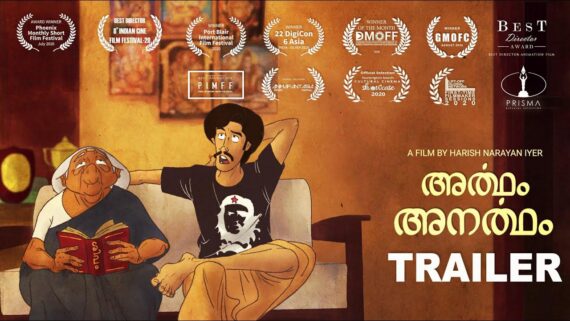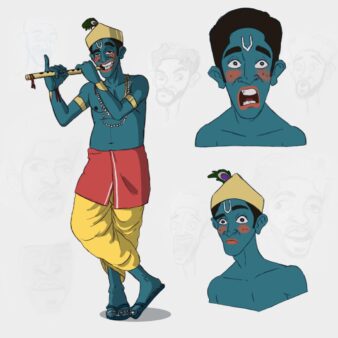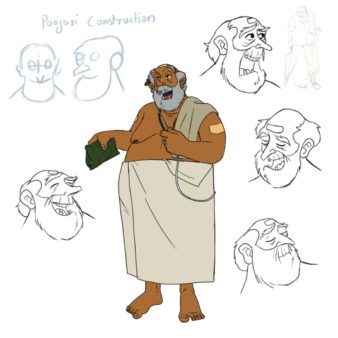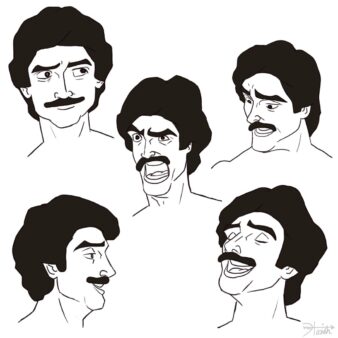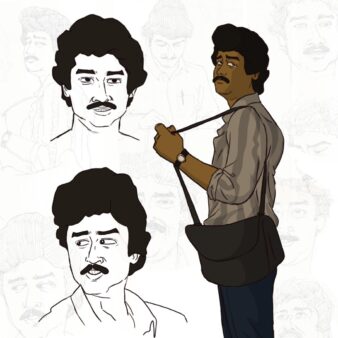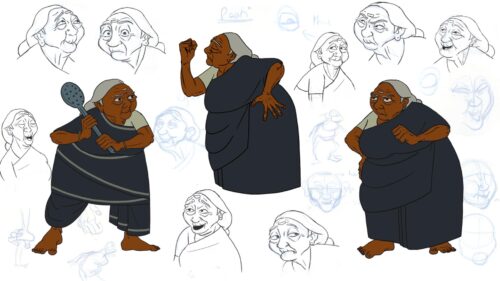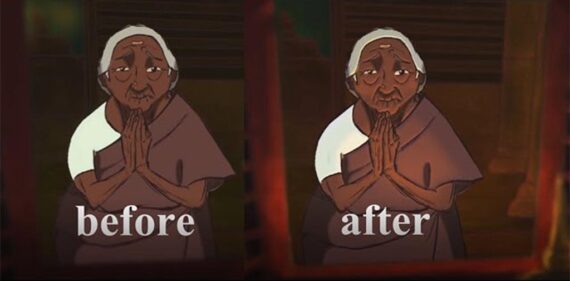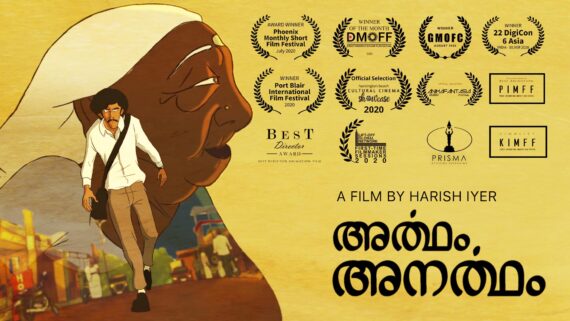‘Artham Anartham’ by Harish Iyer
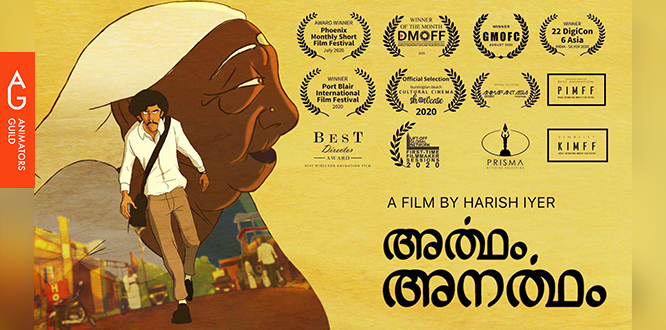
Hey everyone, we are back after a super long time! Hope all of you have been good & surviving through these uncertain times. We promise that we will return with more exciting stuff in the upcoming period!
This month, we are showcasing the award winning animated short film ‘Artham Anartham (Sense Nonsense)’ by Harish Iyer.
Harish Iyer is a talented visual designer & animator from Kochi, Kerala. Having dabbled in software engineering, Harish completed his Masters in Animation and Film Design from IDC, IIT Bombay. He is now focused in visual story-telling, whether it is comics, animation or even live action shorts.
Let’s speak to Harish to learn more about him & his short film:
AG: Hi Harish, pleased to meet you. Can you tell us a little bit about yourself? And also a few things about the place you are from?
Hey, I am Harish, a Visual Designer and Animator based out in Perumbavoor - The Rising Town (near Kochi). I was formerly an engineer and worked as an IT guy, now I am focused on visual storytelling. I had always been fascinated by animation, cinema and comics. Now I dab my hands into these forms of visual storytelling and try to do whatever best I could and sometimes (which is most of the time 🙂 ), I fail majestically at it.
What do I say about Perumbavoor! It’s home, it's green and there is so much space to move around - a typical Kerala small town. Perumbavoor is also the hub for migrant workers. Ask any Bengali/Bihari migrant worker and he will tell you Perumbavoor is for him what Dubai is for malayalis.

AG: You seem to have transitioned from a background in software engineering to visual story-telling & animation, how did the change come about?
Ah, the typical Indian middle class sob story. But the transition was the other way actually. I was always into cartoons, comics, movies and sketching from the time that I can remember. Transition was towards engineering and software, and then again back to this. Those were strange times (hopefully things have changed). Anything other than engineering or medicine was not even a choice after high school. And because of an engineering programme, software happened. I worked for 4 years at TCS. But that's also when I came to know about the Masters programme in Animation design run by reputed institutions like IIT Bombay and NID. I got into the Masters programme at IDC, IIT Bombay, which was sort of a transitional programme for me to get into animation.
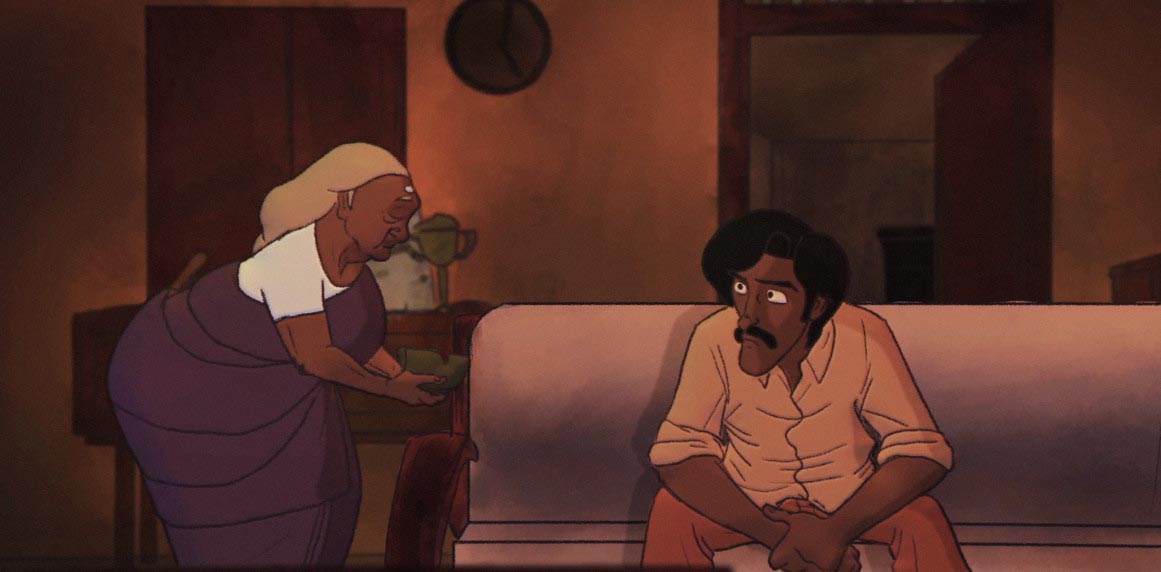
AG: What’s the meaning of ‘Artham Anartham’?
It’s meant to be a catchy antonym. For instance, this film is called ‘Sense Nonsense’ in english (which is not a translation but another catchy antonym). I chose this particular title essentially to capture the spirit of the film which is about two opposing ideas. The word ‘anartham’ is also generally associated with the theme of the film which revolves around ill omens and superstition. Remember when the grandparents used to go “anartham anartham (means disaster)” as soon as an ill omen struck. The word feels so primitive now. Lost somewhere from our normal conversation and mainstream media. ’Artham’ is just an antonym of ‘anartham’.
AG: ‘Artham Anartham’ seems to have a lot of elements prevalent to the Malayalam & regional cinema of the 80s, coupled with Disney visual styles of the 90s. Are we right in assuming this?
I have grown up with a good dose of cinema from the late 80s and 90s. Subconsciously those references might be there. I did heavily borrow the colour palette and lighting from a couple of 90s malayalam films. Maybe that, along with the subject of the film might remind you of the movies from that era. But my intention was not to make a period film to be honest. The world of ‘Artham Anartham’ is as contemporary as any Kerala village from the modern times.
But you are absolutely right about the Disney visual reference bit. I did study the character designs from the production art of 90s Disney and Dreamworks animated feature films. I find those designs really appealing. If you are even remotely reminded of those references, then I will take that as a compliment. Infact, my initial character design of Kicha was based on a younger version of actor Jayaram (from malayalam film ‘Aparan’ to be precise). But I revised that whole design because I got this same feedback during pre-production. That it felt very 80s. Revision didn’t work I guess, hehe.
AG: How did the concept for this story come to your mind? What was the process followed for the preproduction & visual development?
Frankly this was not the first idea that I was going to make. But that is a film for the future. For this one, first I decided what I would NOT do:
●No irritating kids
●Not a preachy message driven film
●No mythology or known story adaptation
I would not adopt a style which was within my comfort zone and veil it as experimental animation
●No irritating kids
●Not a preachy message driven film
●No mythology or known story adaptation
I would not adopt a style which was within my comfort zone and veil it as experimental animation
Why chalk off these options? Because 90% student films back then did exactly these things. And once you get this out of the way then the direction you want to take this forward becomes much clearer. I did not develop a story in this case, rather worked on developing leading characters first. Two diametrically opposite characters under the same roof.
Take for example Tom & Jerry. One day in the life of two opposing forces automatically brings forth humorous situations. The character traits for Paati and Kicha are based on some real life people I know. For visual development, I used tons of references - Personal family photographs, personal experiences, also a lot of animated feature films and live action malayalam films.
AG: How big was your team? Did you receive any support/funding?
A major motion picture star, an oscar winning sound designer, a national award winning music director and a major OTT platform producer were NOT a part of this film. This is just a student graduation film.
Hehe, It was mostly just me in a room by my computer. The film had all the funding and support that you could expect an Indian student film to receive. And therefore, it has all its limitations as well. But I did have the support of some really special people - some friends and family, who helped me during the course of the production.
I literally forced my brother Prashant Iyer to do the voice acting for the lead character. A couple of my friends did the voices of the other supporting characters. A special friend from my software days, John Joseph, provided acting reference for the film. We shot the entire acting reference footage with John first. This helped in timing and locking key acting poses for the film.
The only person who was an industry veteran here was the music director - PS Jayhari. He was really supportive and kind enough to be associated with a student animation film for a very nominal fee.
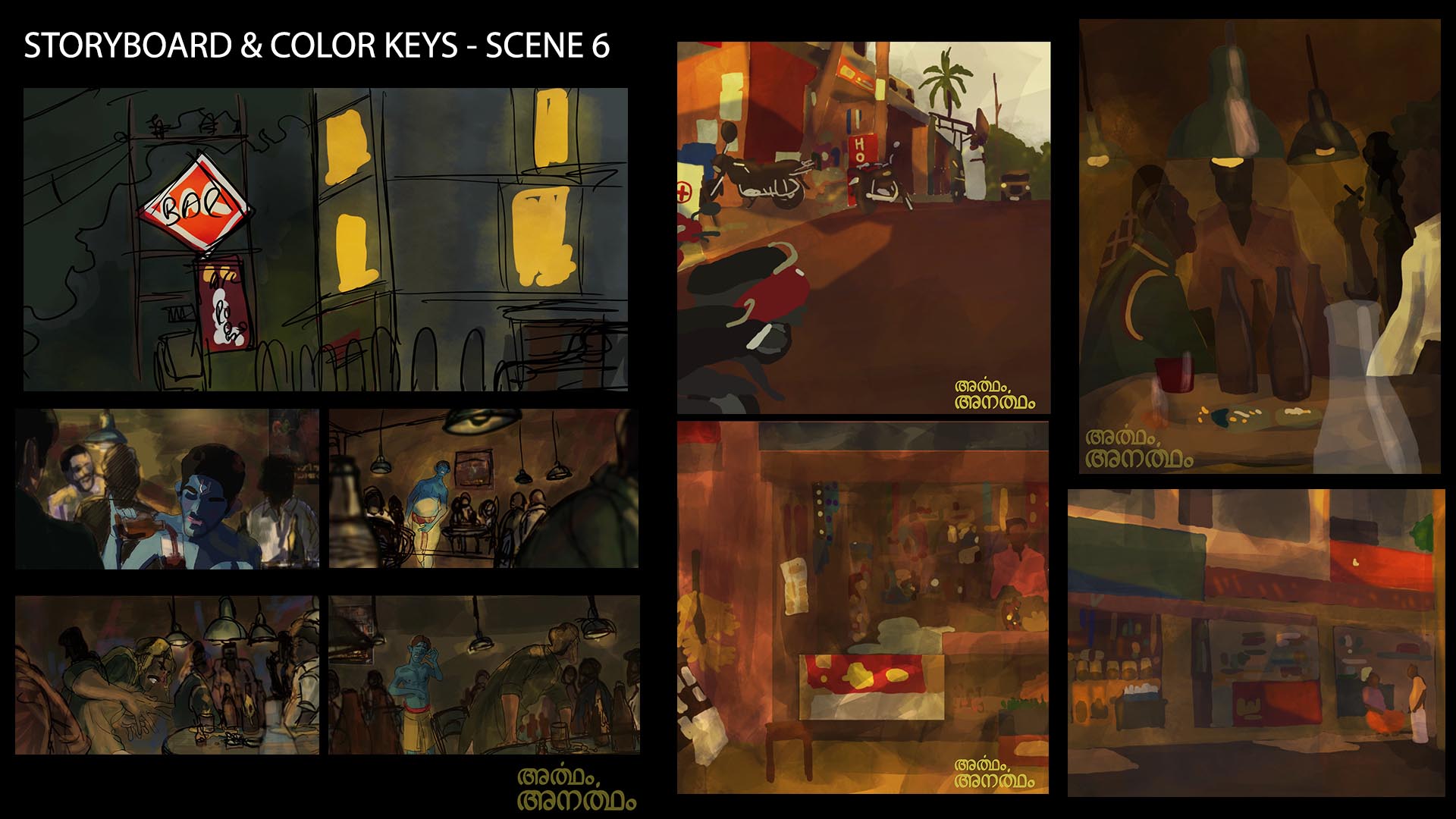
AG: Can you talk to us about the production of the film? What were the challenges faced and how did you overcome it?
The whole process was new to me. Set aside film making, the process of drawing itself was a nightmare to me. I have been drawing since childhood. But that was always for fun, as a hobby and not with an intent. But when you work on a project like this, it is very difficult to bridge the gap between your skills and what you envision in your head. It is a lot easier for people with a formal art background to grasp the medium. They don’t have to work on drawing and painting foundation as much as someone who has no art background.
I have lost a lot of sleep over this. It almost feels like trying to run a marathon, but your legs don’t even have the strength to stand. And people running at great speeds before you, all the while you just crawl and hope to catch up. There is no easy way to overcome this art handicap. Repetition and practice is the only way I know. And I also used a tonne of references (the absolute best ones) as a crutch. I don’t think I will ever say I have overcome this challenge. But I will always strive to be as good as the art Gods I look upto.

AG: What tools did you use? And how much time did it take from start to end? Did you learn anything unique during the process?
I got a second hand Cintiq display tablet and a discounted student licence of TVPaint 11 software from the saved up stipend money for this project. But primary tools are always the hand and head of the person who is using these gadgets. I often get asked this question - ‘Which software bro?’ But does it really matter!
The overall film took quite some time to finish. Project started in mid 2017 and ended in mid 2020 - 3 years! But I had only properly dedicated 1 year for this in college. For the remaining 2 years I worked on this at night after normal day’s office work.
One unique learning - There is a freeware that I used during post production. It is called Laigter. The look of the film changed drastically after using this. The process is a bit laborious. Check it out if you must.
AG: What was the reception to your film, both in India & abroad? Did you receive support from the animation community?
Strangely the film was received quite well in the festival circuit. A lot more than what I had expected. Most of the festivals went online because of the pandemic and a lot of prominent Indian ones were cancelled. But we still got selected at quite a lot of them. We have close to 50 selections and about 20 something wins as well. I am actually proud of a couple of good exclusive animation film festival selections where we were selected along with the best animated films from around the globe - 22nd DigiCon6 Asia (India Silver), Athens Animfest 2021 (where we were one of the only 2 Indian films and we got distinction), AnimaFantasia 2020 (Finalist), BISFF 2021 (the only oscar accredited festival from India for short films) to name a few.
It was really overwhelming for me when a couple of animation stalwarts from India who I really upto chanced upon the trailer of the film and personally messaged me appreciating its quality. I really hope to work with them someday. The festival circuit did open a couple of doors for me. I also met some really fascinating independent animation filmmakers from other parts of the world during this run. They really helped me understand this film through their lens. What a person from a different part of the world and varied culture takes from it is very interesting.
I have unfortunately not been part of an animation community as such (not that I am aware of), I started using a smartphone only in 2019. But the Animators Guild reaching out to me seems like an affirmation to a community. Thank you so much. The only other animation community I know of personally is the IDC animation community. Unfortunately, I did not get much support from there. Ironically there was so much support from people who had nothing to do with animation - just general film enthusiasts.
AG: What are you working on currently? Do you have any upcoming projects that you wish to speak about?
A few weeks back I had the opportunity to be a part of a CRED ad campaign with Bakarmax under the direction of Vivekananda Roy Ghatak. I had the privilege of designing and animating Suppandi in the ad film. Otherwise, I have a proper day job now. But it's only after dark, one gets time for personal projects. There are a couple of them cooking on the back burner in parallel.
I am working on a short film called ‘Mumbai’ which I wish to finish hopefully by mid 2023. ‘Artham Anartham’ was a learning experience. ‘Mumbai’ will test my capacity as a filmmaker. Then there is a pet project from long back - a graphic novel called ‘The King of Cooks’. I had published it as a webcomic at Bakarmax, that I have to bring to completion as well.
The ultimate desire is to make a feature length animation film in this lifetime. Putting that idea out in the universe. And for that I am studying the visual aesthetics, character performances and shape languages from old Indian films. That will definitely be a period film though.
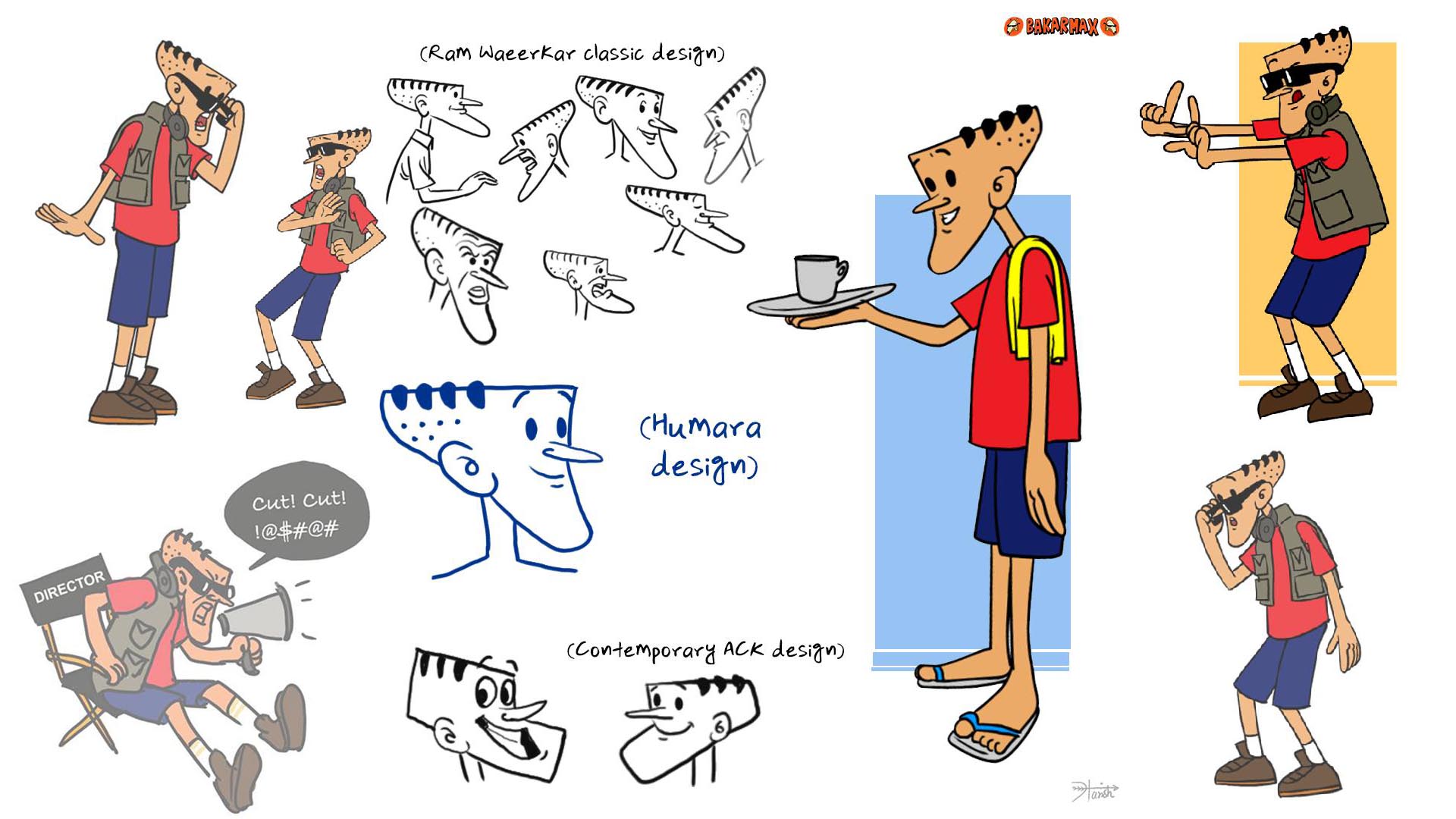
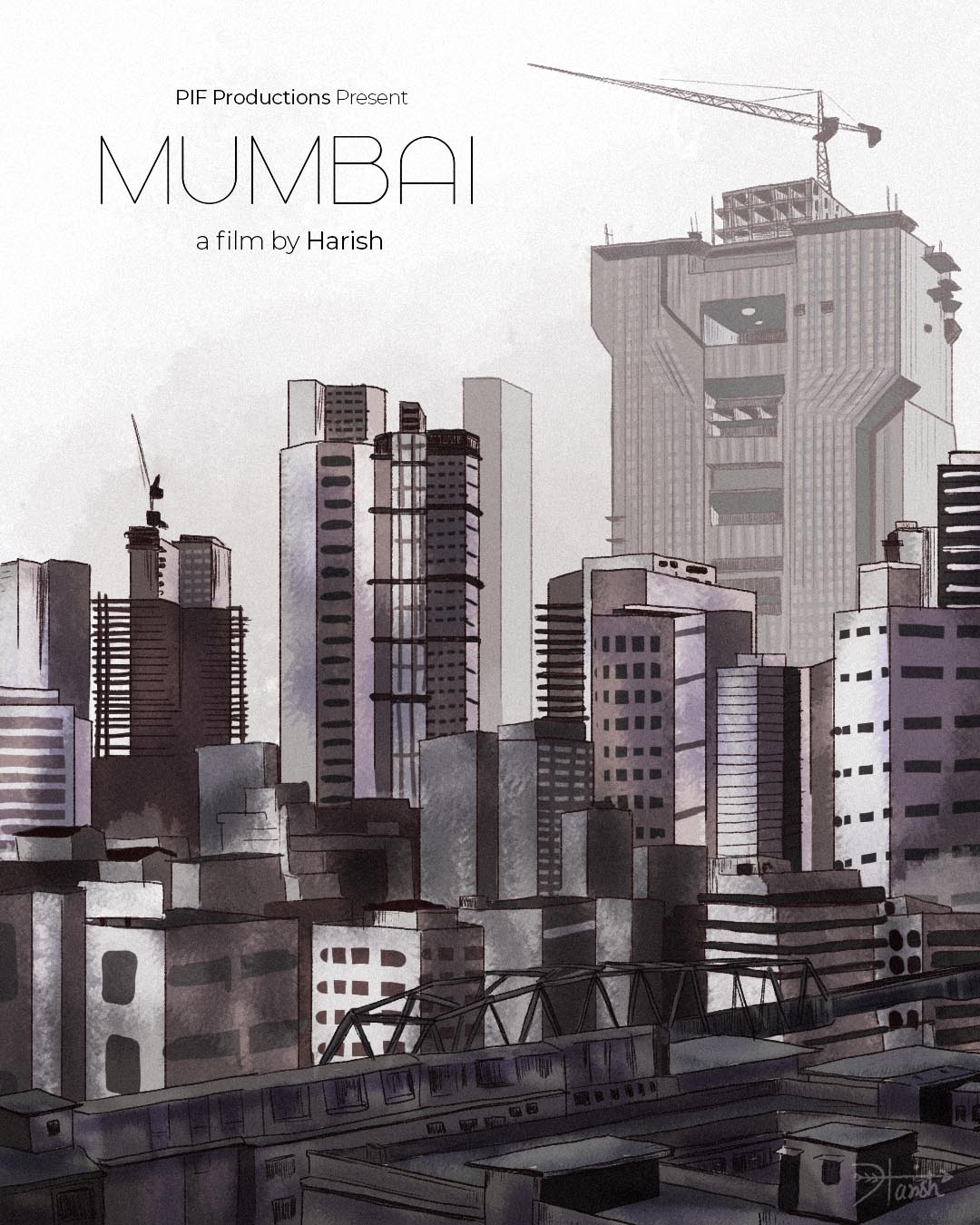
AG: How are you coping with the ongoing pandemic? Also is there anything unique about working from Kerala?
I am completely vaccinated, I wear a mask when I go out, wash my hands regularly and stay indoors mostly. Is there any other way to deal with this. But on a personal level, things are looking bright in terms of the quality of work I am able to do now.
I was able to finish ‘Artham Anartham’ during the start of the pandemic in 2020 only. There is this balance between personal and professional work that I have managed to strike from this whole work from home scenario. The comfort of home - I think that is the only unique thing about working from Kerala. The devices, tools, and the effort is all the same.
AG: Can you name a few of your favourite movies (live action/animation)? And also some of your favourite artists/animators who inspire you?
The list is too long and gets longer and longer everyday. I admire any and every auteur filmmaker. Not just films, I relish good fiction and music too. Films are so fascinating, and so many. It's difficult to choose a few. But there are two films that have had a huge mark on me.
1. The Lion King - I saw it at a friend’s home on a VHS cassette. That film is truly special to me. The one film that imprinted animation in my head.
2. Anandabhadram - That is one film where I first observed the craftsmanship involved in bringing visuals to life. I started respecting the power of the medium after this.
The list can go on and on. As far as artists go, the answer remains the same. Far too many artists I look upto and steal from. Glen Keane is definitely one artist/animator whom I consider as the gold standard. And then there are numerous others.
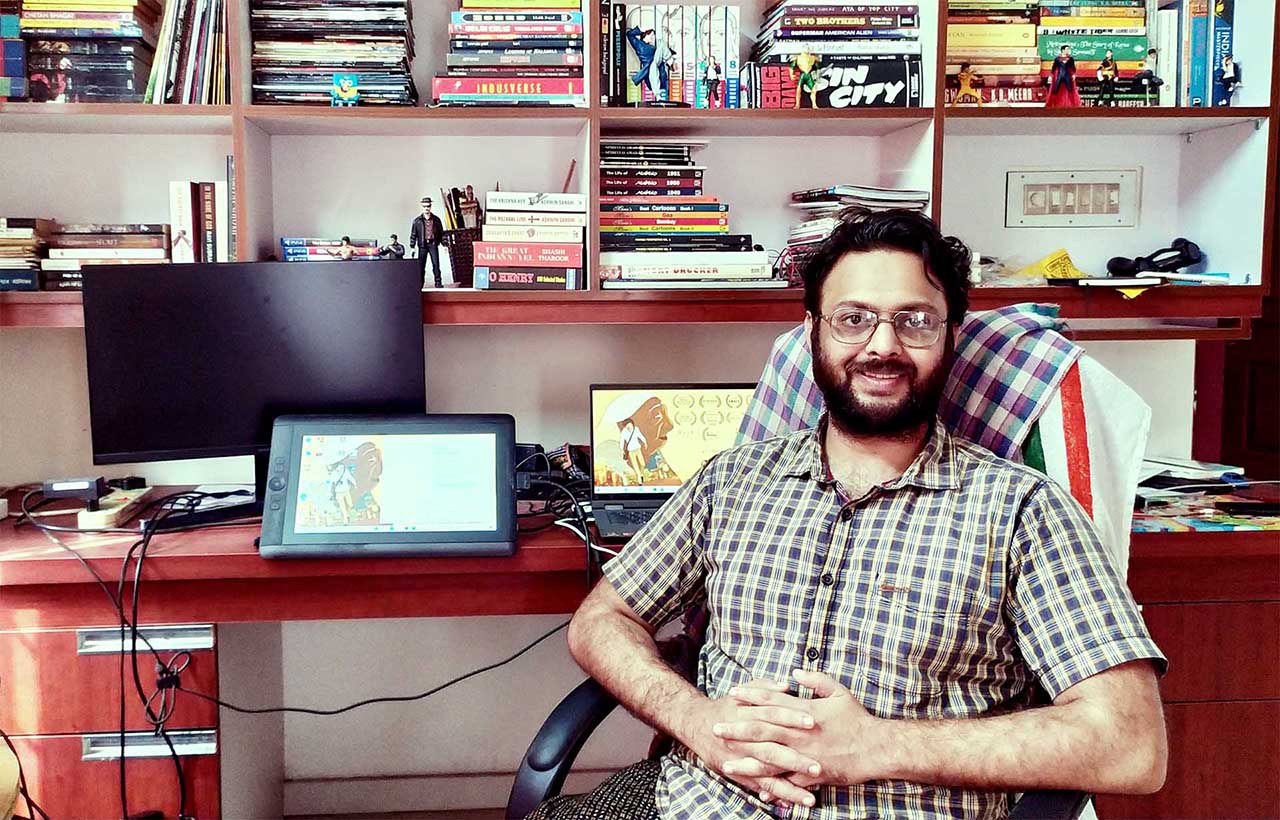
AG: What are your thoughts on the Indian animation industry? And what advice would you like to give to your younger self?
From personal experience, it's not a smooth path. It's too soon to call this machinery an industry. There are many animation factories and shops in India, and most of them I felt are exploitative in nature as well. Majorly animation in India is client service based.
Don’t get me wrong. There are jobs, yes. But most of them just require software operators. It's only when we have more auteurs and original IPs that generate profit and grow, we can call this an industry. Right now that's not the case (not to my knowledge).
But there are many talented and skilled artists who are capable of delivering world class content here.
An advice to a younger me - Do you mean to say I am old? Come one man! I generally refrain from giving advice. Every person has his own set of unique problems and circumstances. One has to discover and carve his own path. If ever there was a possibility for me to give advice to my younger self, it would be really a personal one actually.
AG: Thank you so much Harish for taking time to speak to us. We wish him all the best for his future endeavours and projects!
You can follow Harish at the below links:

